Best guitar capos 2025: 8 great budget-spanning picks
Unlock a world of creativity with our guide to this essential accessory for acoustic and electric guitar, ukulele, 12-string and more
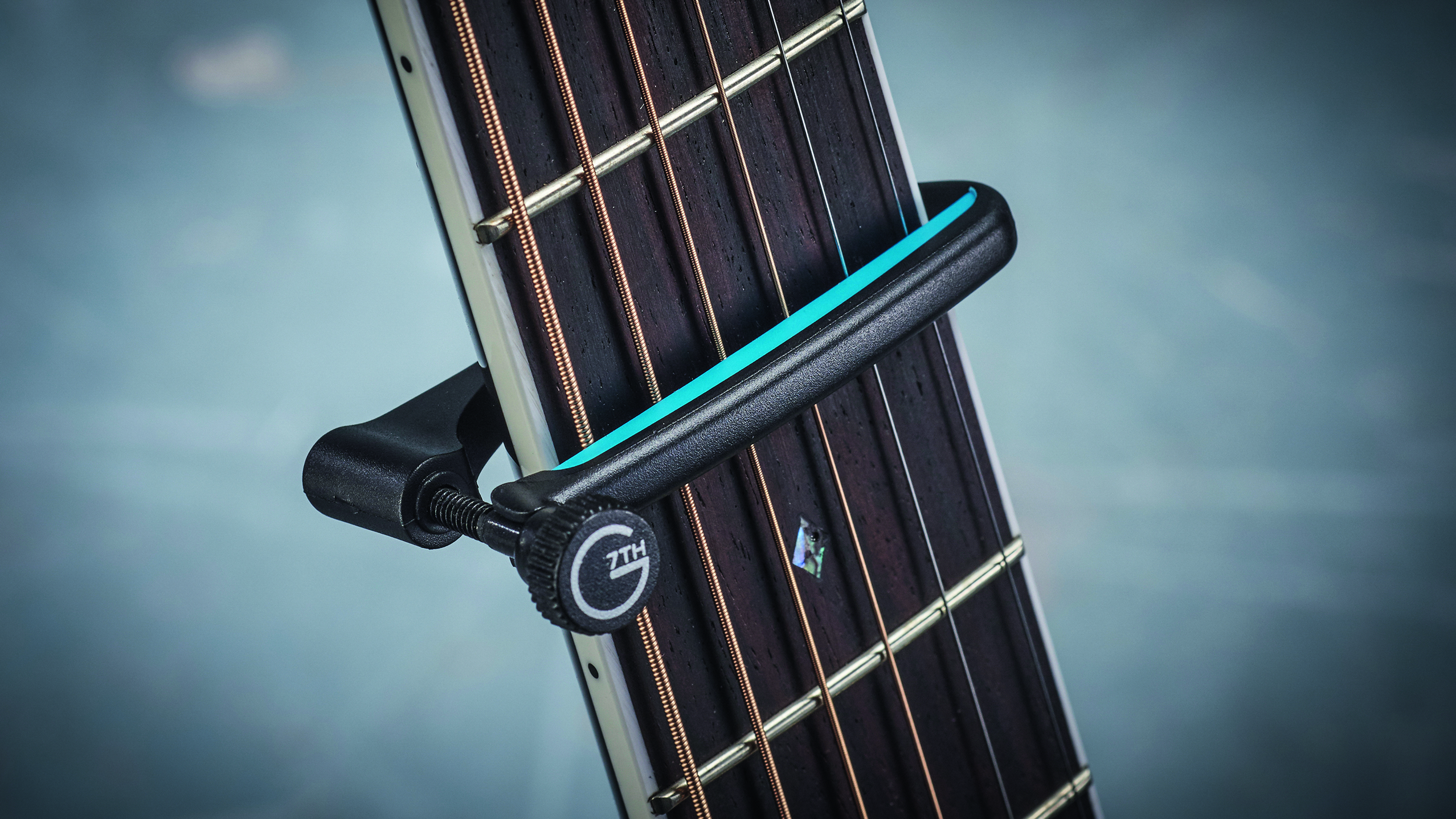
Don’t let its diminutive size fool you, the guitar capo is the most affordable piece of gear you can buy to dramatically change your sound. Every player should own one of the best guitar capos in this list because of the huge potential they allow for songwriters, players covering songs and anyone else who wants to cover more ground as a guitarist.
For example, a capo can create a different feel and sound for chord work – giving a brighter and higher tonality as required. A capo can also help singer/guitarists cover different vocal ranges and change the key of a song.
But not all capos are made equally – there’s a huge range of designs to choose from out there for different budgets. Quality matters – so that’s why we’re here to guide you through our pick of the best guitar capos to suit your needs.
Capos aren’t just for guitar either – there’s ukulele, banjo and mandolin options too, in addition to capos designed specifically for classical and 12-string guitars. We’ll be looking at them all in our pick of the best guitar capos out there, along with capos for players who really want to go further with experimentation.
We've included some in-depth buying advice at the end of this guide, so click the link if you'd like to give it a read. If you'd rather get straight to the products, keep scrolling.
Best guitar capos: Our top picks
If you’re looking for an all-rounder, our recommendation would be the G7th Performance 3 ART. G7th caused a stir in the capo world with its first Performance model, and now it’s perfected its ART with the third iteration – that’s Adaptive Radius Technology, to be precise. This is found in the capo’s pad that makes contact with your guitar’s strings, adapting to the specific curvature of its strings and fretboard.
ART also allows even pressure across all the strings for enhanced tuning stability and minimum tension. Exactly what you need from a capo, and it’s combined with an attractive, reassuringly solid build.
If your budget is a little lower, we’d go for the Shubb Original C1. While it’s not the cheapest out there, for value it's hard to argue with this industry standard. The Shubb C-Series fits almost all acoustic steel string and electric guitars with its simple and accurate locking action that keeps the strings centred, and soft rubber that prevents the strings from bending over the frets and negatively affecting your sound.
The C Series capo is also available in black chrome, brushed and polished nickel or brass depending on your taste. There are models available for classical nylon-string, 12-string guitar, banjo and mandolin too.
Best guitar capos: Product list & reviews
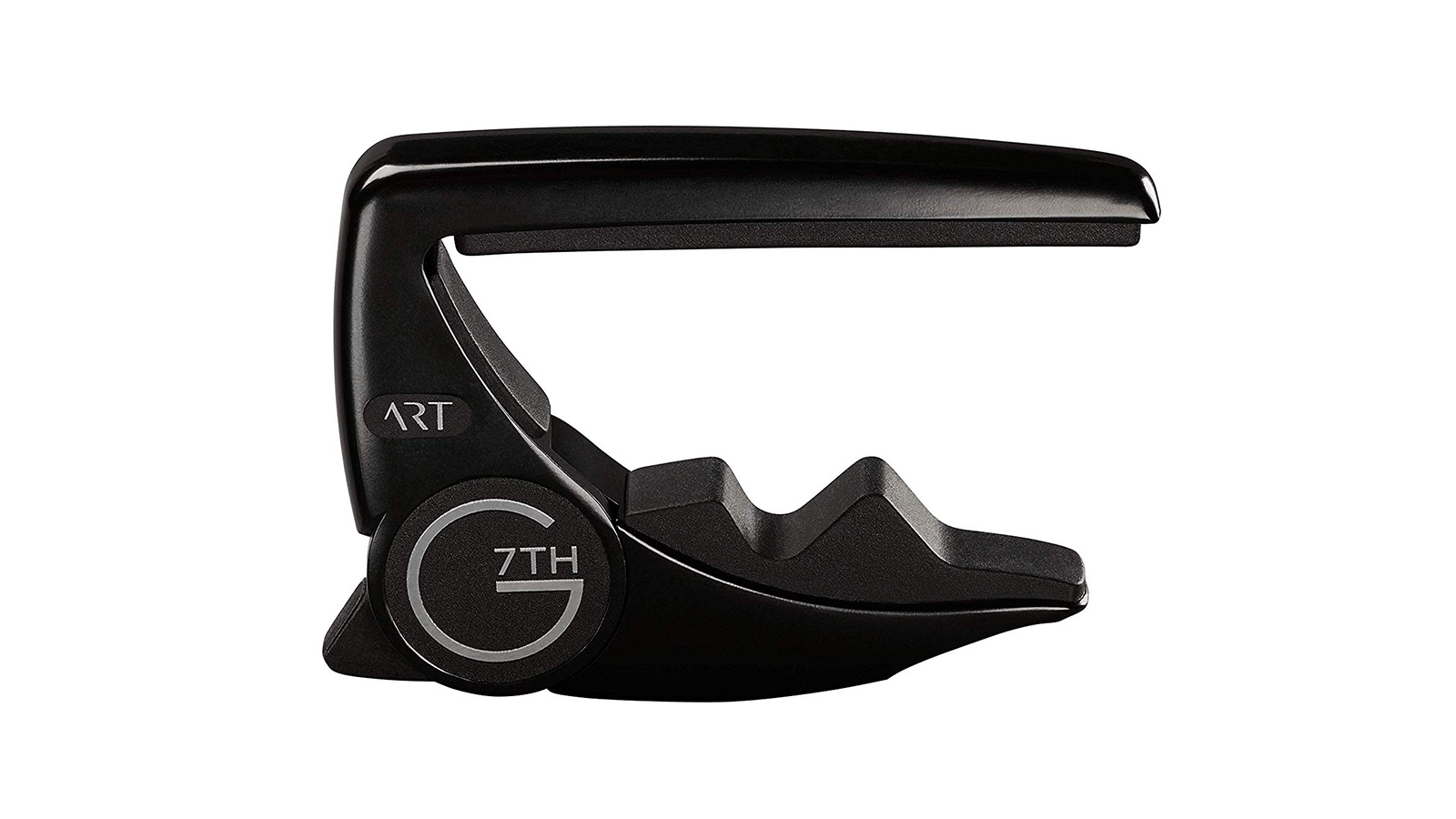
1. G7th Performance 3 ART guitar capo
Our expert review:
Specifications
Reasons to buy
Reasons to avoid
G7th isn’t resting on its laurels after the success of the first two Performance capos – the core model of its ever-expanding range. The 3 is sized between its predecessors with the same smooth, quality finish, but delivers new Adaptive Radius Technology (ART) in its pad that makes contact with the strings, enhancing tuning stability.
The Performance 3’s other key feature is its’ Unique Tension Control’ allowing you to gently squeeze it for attaching and releasing, resulting in a solid fit around any neck with a quick release button to remove the capo. We’ve gigged and recorded with one and in practice it just works with a fit-and-forget simplicity, with the ability to store it on your headstock between use. G7th’s confidence in the design is underlined by a lifetime warranty, making this an investment that will go the distance with you on your playing journey.
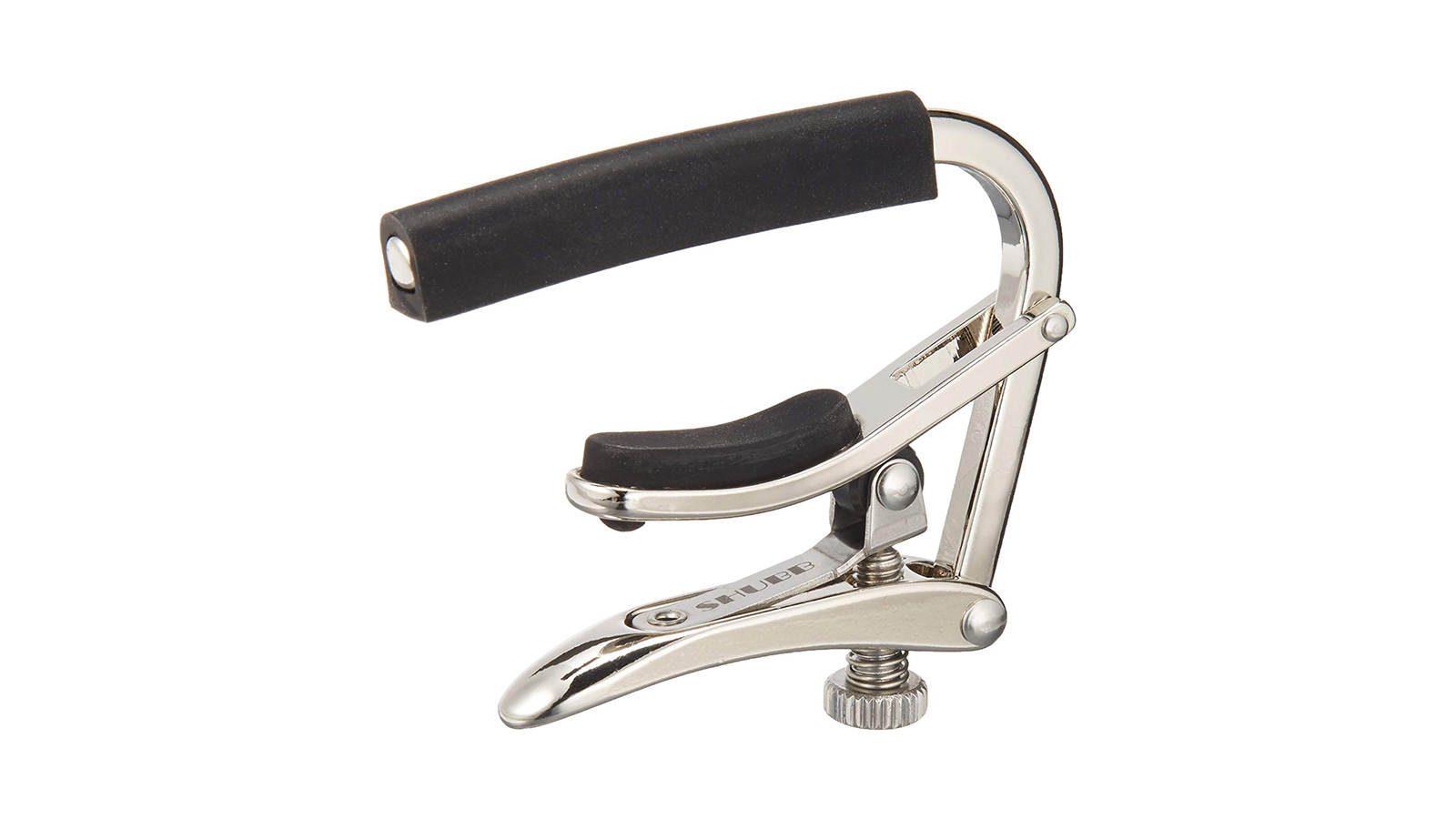
2. Shubb Original C1 Steel String guitar capo
Our expert review:
Specifications
Reasons to buy
Reasons to avoid
Another capo we’ve been impressed by after much onstage use. This one is a familiar sight as an industry standard that was launched over 30 years ago – its staying power speaks volumes about how effective its roller design has proved for players including Keith Richards, Joe Bonamassa, Sheryl Crow, Brian Setzer and Eric Johnson.
You can apply this capo for the bass or the treble side, setting the right amount of tension with the screw cap so it fits snuggly over the strings but not too tight. Shubb says the capo itself is made to last a lifetime but offers reasonably-priced replacement rubber sleeves to buy if yours eventually shows wear.
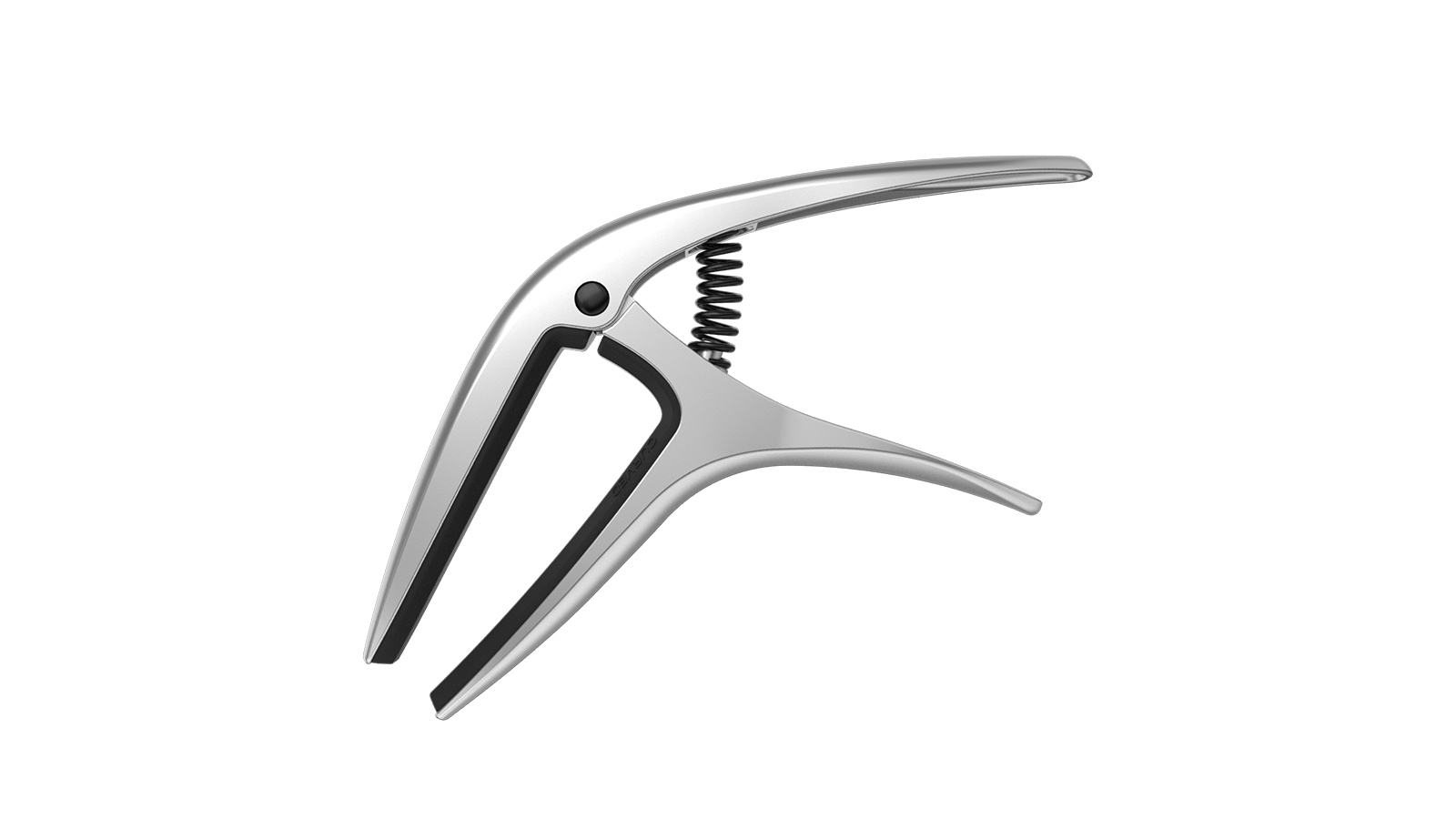
3. Ernie Ball Axis capo
Our expert review:
Specifications
Reasons to buy
Reasons to avoid
Need to fit or remove your capo single-handedly on the fly? You’ll need a spring-loaded design that simply clamps straight on without the need for fine tuning before or afterwards. That’s why the Axis Capo is ideal with a dual radius design that will fit flat or curved fretboards on six and seven-string models.
It’s available in black and silver or the slightly more expensive gold and bronze ($16.99) and easily pegs onto your headstock when not in use.
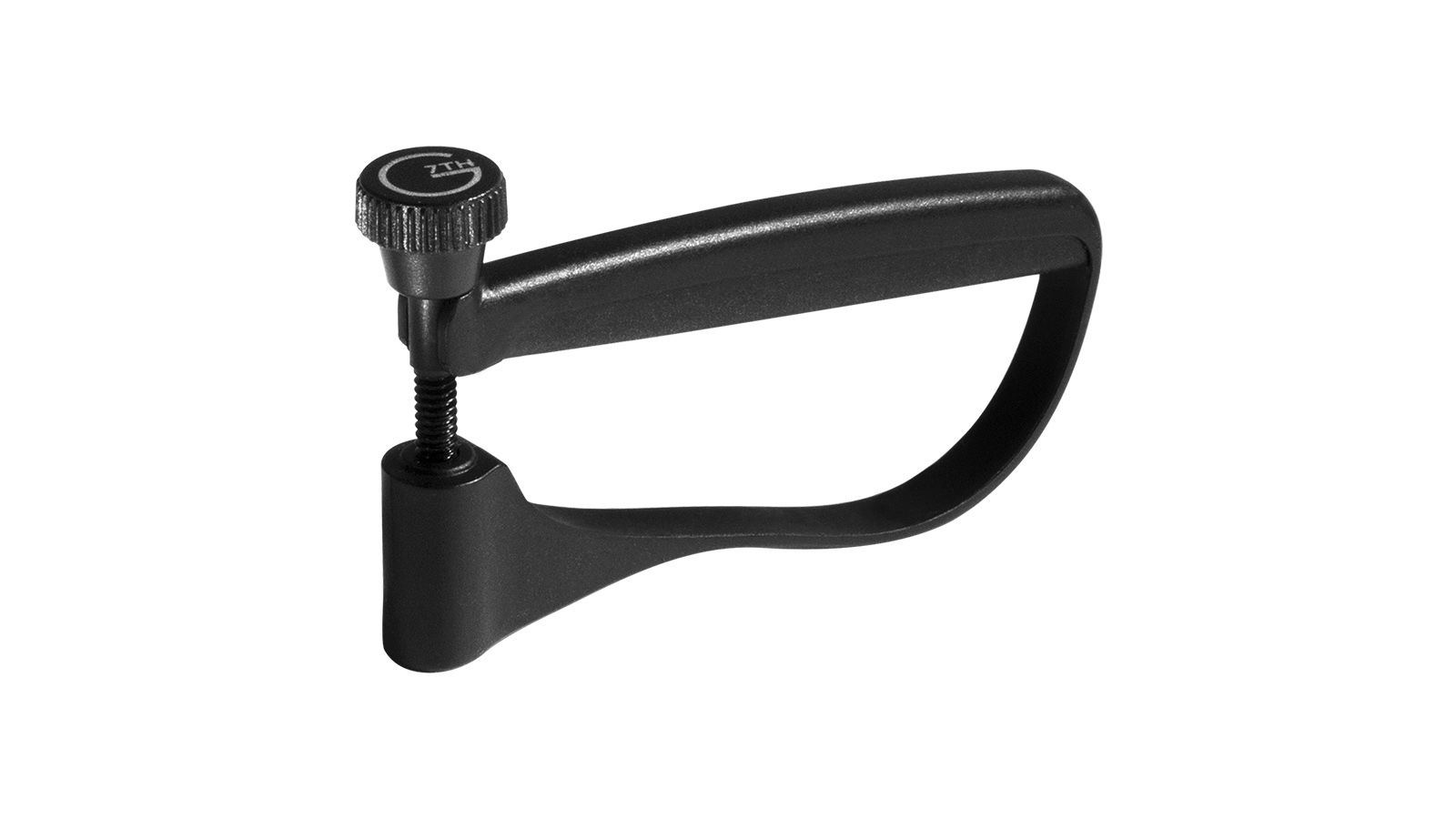
4. G7th UltraLight Classical guitar capo
Our expert review:
Specifications
Reasons to buy
Reasons to avoid
If you think capos should be heard and not seen, you’ll probably appreciate the most affordable option in the G7th line – one it’s calling the lightest capo on the market. This is the Classical version, designed with wider necks in mind, but you can get it for standard electric and acoustics as well as ukulele.
A veritable feather compared to G7th’s flagship Performance capo, the UltraLight lives up to its name with a weight of just 8 grams and a very low profile look that won’t get in the way when playing. You can still fine tune the tension too.
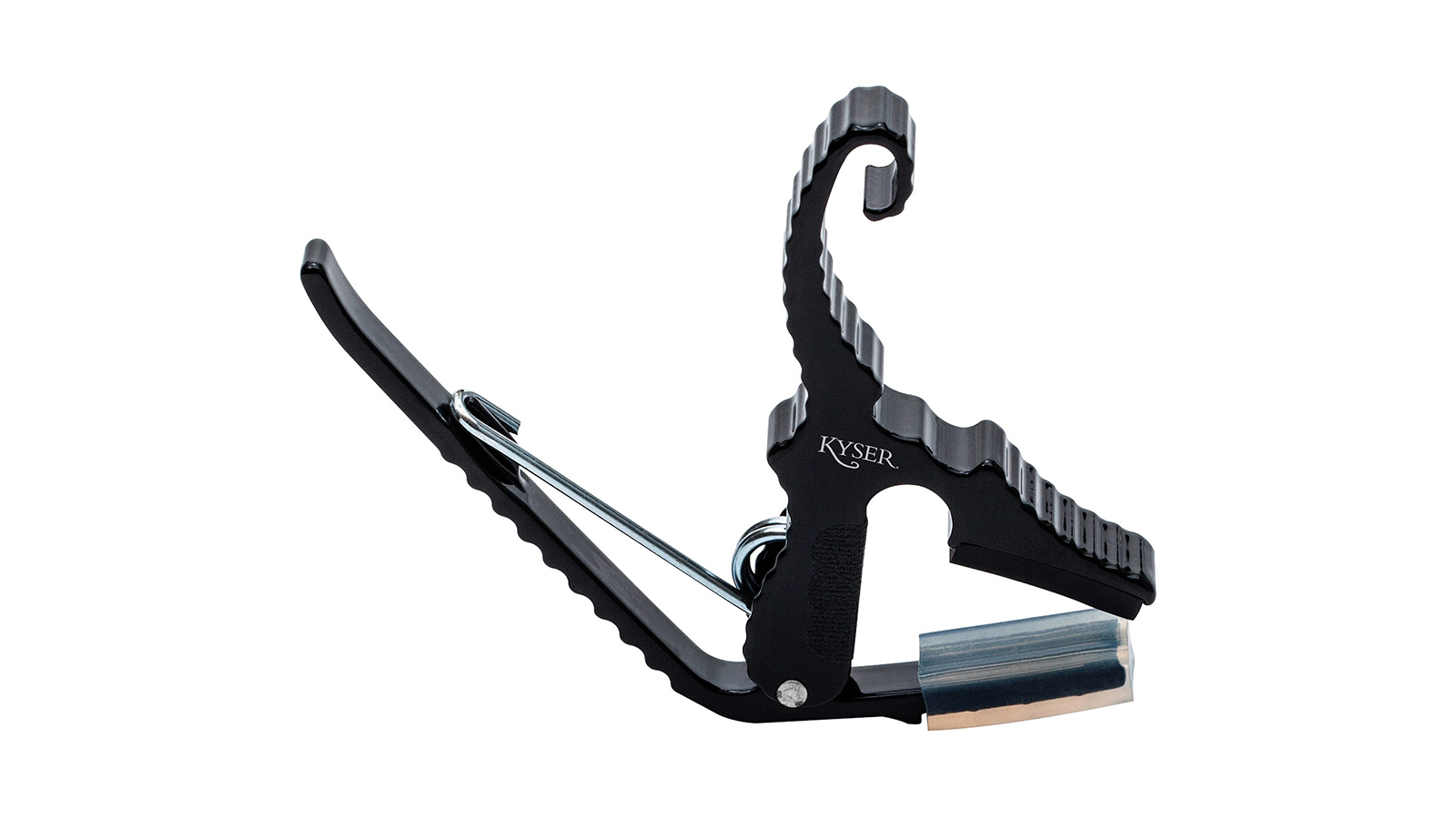
5. Kyser Short Cut 3-String acoustic guitar capo
Our expert review:
Specifications
Reasons to buy
Reasons to avoid
If the only thing putting you off trying alternate tunings is the time it takes to tune them, this is an interesting tool. You can even use it with a standard capo to change keys or play behind the Short Cut capo to experiment further.
Two examples of how you can use it are placing this capo on the second fret and over the A, D and G strings, giving you a DADGAD sound. Place it in the second fret but over the D, G and B for an open A you can play slide in. The Short Cut lives up to its name as a quick way of experimenting and getting out of playing ruts you may find yourself in. Especially useful if you’re a songwriter.
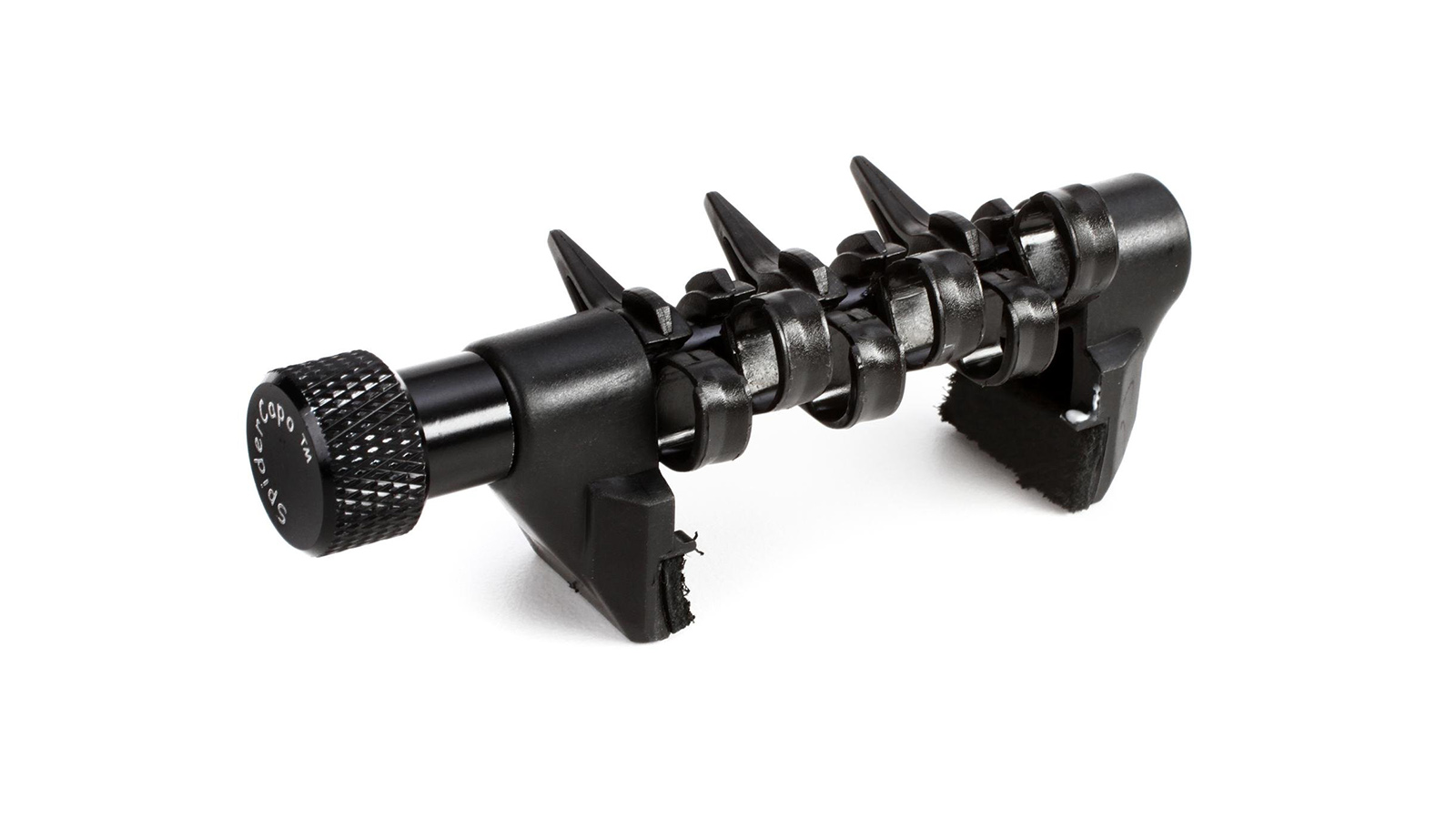
6. Creative Tunings SpiderCapo
Our expert review:
Specifications
Reasons to buy
Reasons to avoid
Could this be the most creatively inspiring capo of all? Launched in 2009, the spiky look of the SpiderCapo sets it apart from other capos, and it performs very differently too. It allows you to capo each string individually, opening up a mind-boggling amount of creative possibilities in different positions and tunings.
The potential becomes even wider when you consider you can play standard chords above the SpiderCapo and then get creative below it, finding new chords and infusing open strings into melodies to explore and use in your music.
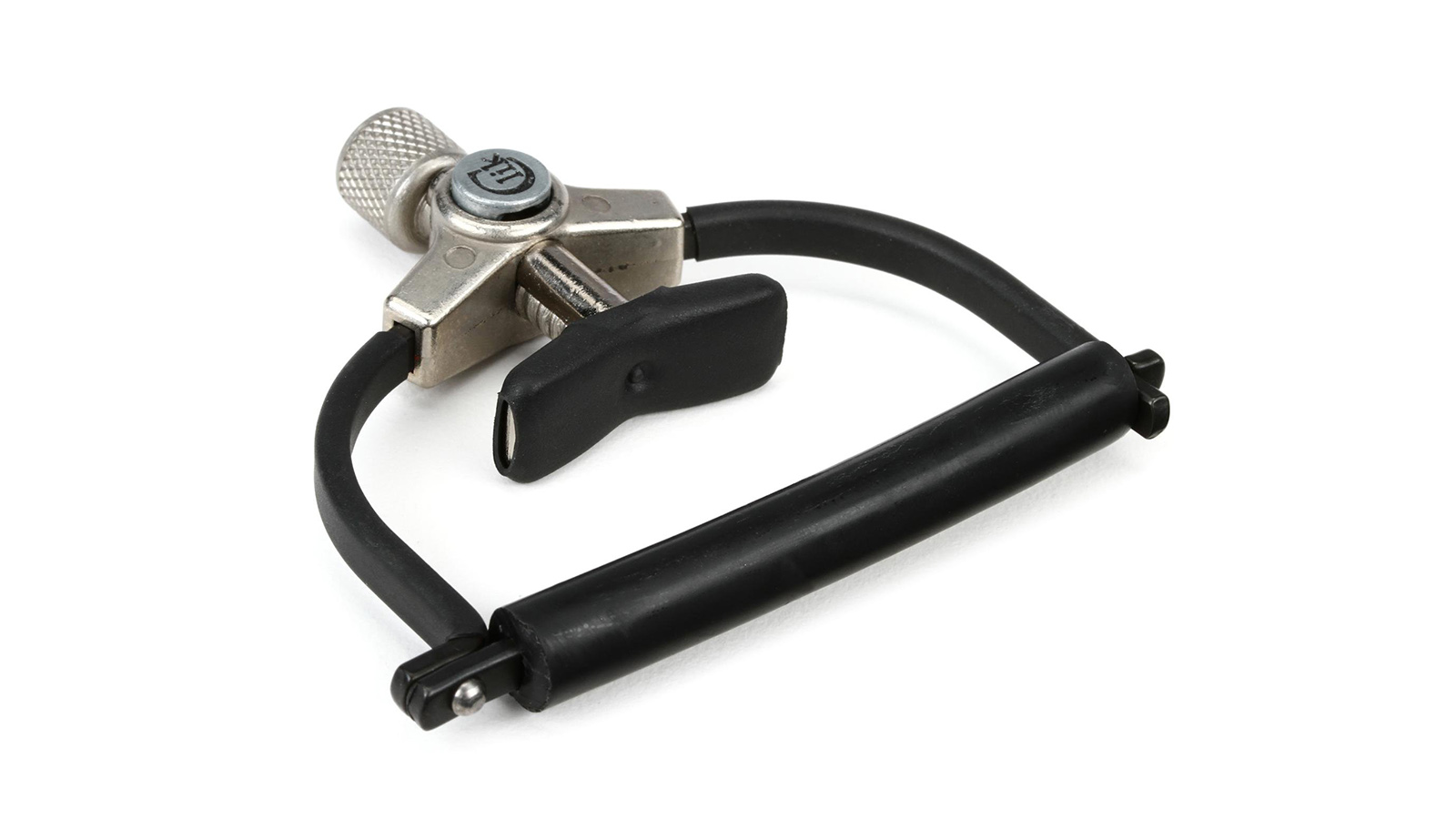
7. Paige Clik 12-string guitar capo
Our expert review:
Specifications
Reasons to buy
Reasons to avoid
This USA-made Paige Capo design is available in banjo/mandolin, ukulele, acoustic, 6 and 12-string models, but you’ll notice it looks different to others. The whole idea behind the design is to control tension evenly across the fret and eliminate string buzz. This is especially vital when you have the challenge of 12 of them to keep in line!
By pulling from the centre instead of the side with precision adjustment, the idea is to create even tension across all the strings. Rubber tubing on all the contact points also protects your guitar when you need to move positions fast and this Clik design offers a quick release mechanism for removal.
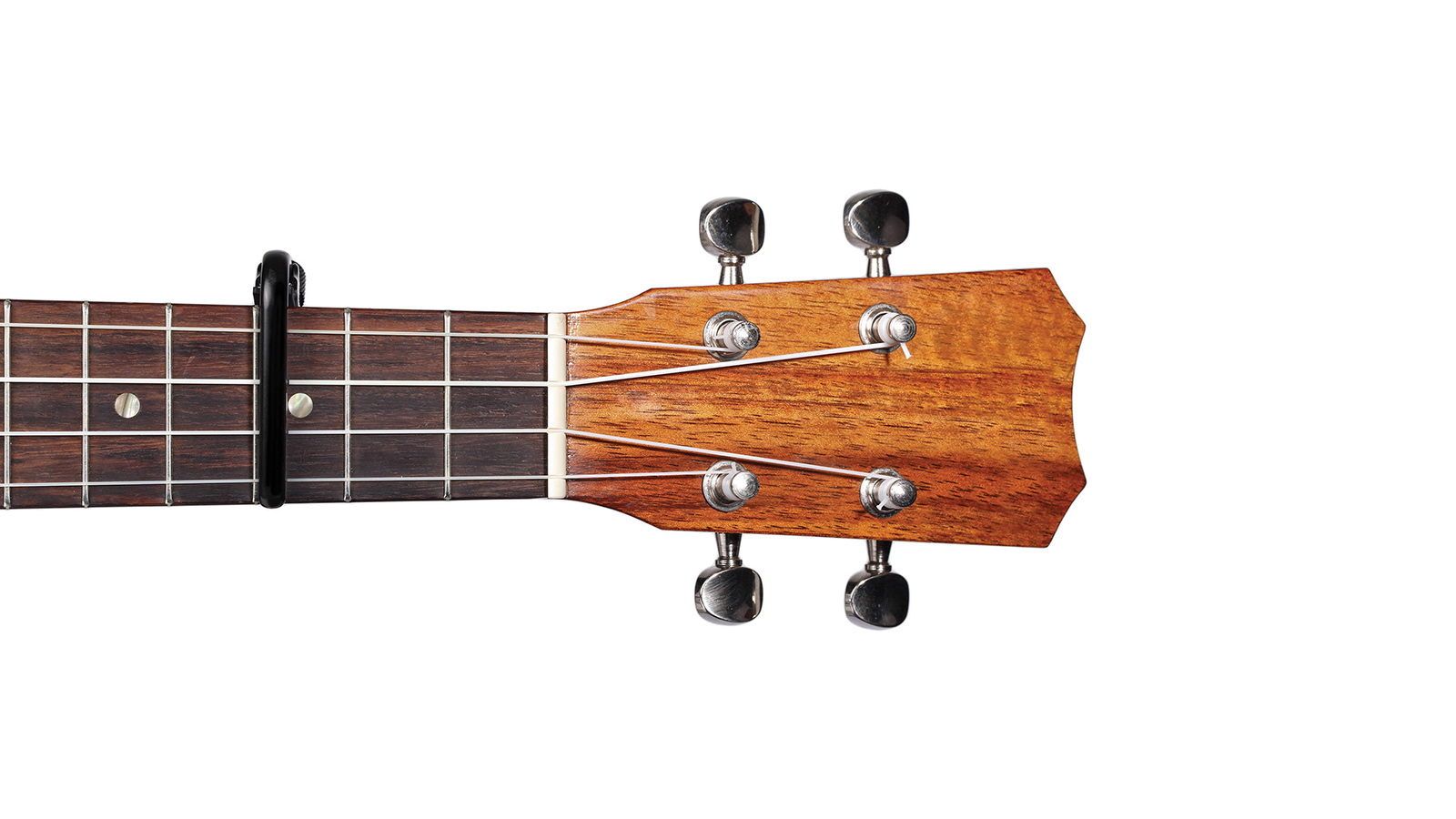
8. Planet Waves NS Ukulele Capo Pro
Our expert review:
Specifications
Reasons to buy
Reasons to avoid
The Planet Waves NS range is great for guitarists looking for a low profile and lightweight capo at a reasonable street price, and ukulele players aren’t missing out either.
The adjustment mechanism enables you to be accurate about the amount of tension you set when fitting it, ensuring you can get it just right for your specific uke’s neck and avoid having to retune.
The aluminium is aircraft grade too, so you can add potential longevity to its attributes!
Best guitar capos: Buying advice
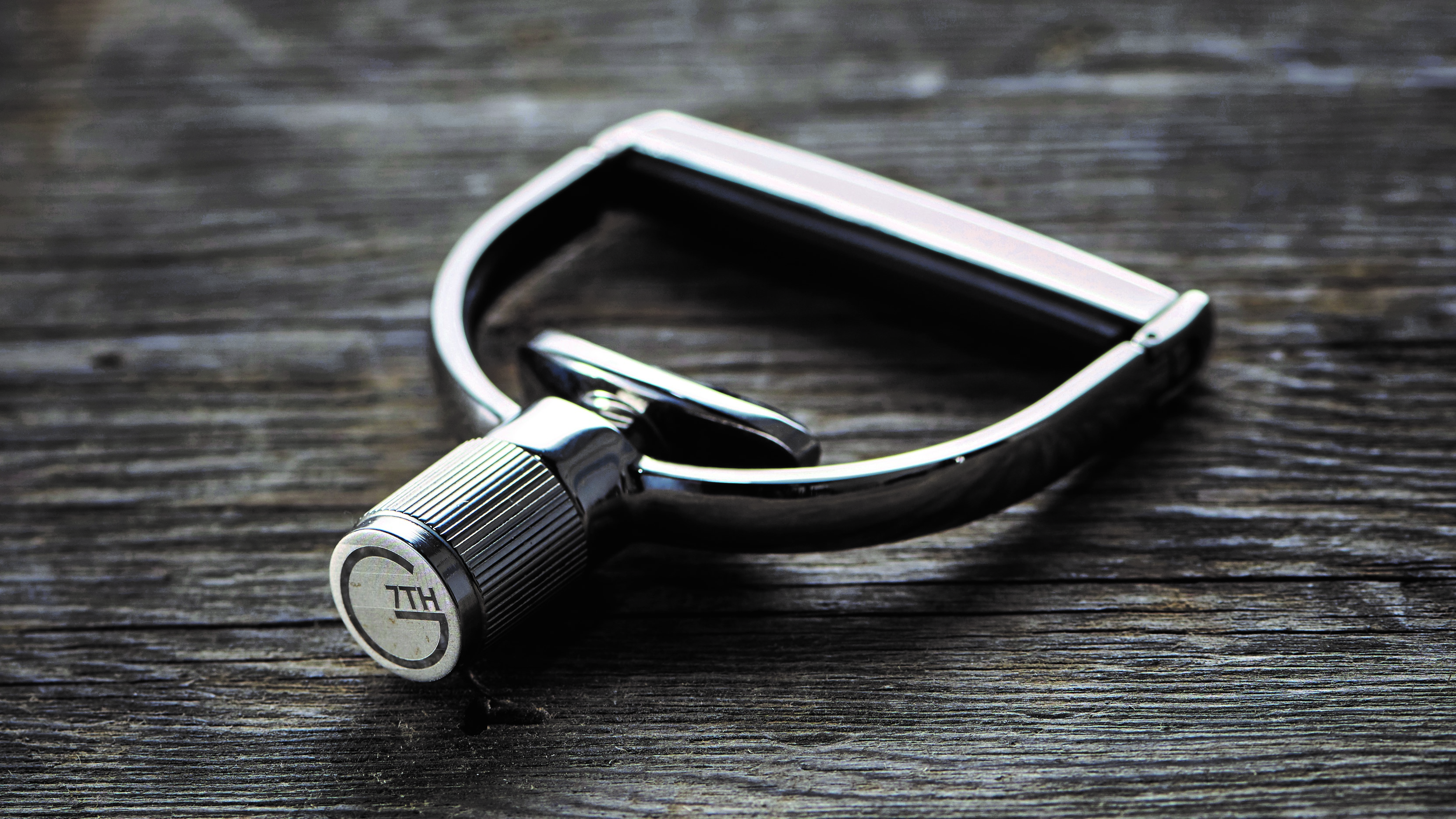
What is the purpose of the best guitar capos?
MusicRadar's got your back
All capos perform the same function; essentially acting as a new moveable nut that you can move up to any fret on the guitar – the higher you go on the guitar neck, the higher the pitch. For example, if you place the capo at your guitar’s third fret, the E strings become G when played open, A becomes C, D becomes F, G becomes Bb and C becomes D. As well as giving a new tonality to your chords, you can move a capo around to change to a key that may suit your or the singer’s voice better.
How do I choose the best guitar capo for me?
First of all, your capo needs to fit your guitars neck and fretboard well. The capo should be a tight enough fit that all of the strings still ring true, but not so tight that they're pulled sharp and out of tune.
Getting a tight fit is as much about spring tension as it is about getting the right shape and size of capo. You'll need to find a capo which matches the radius and width of your fretboard, most importantly. If you're unsure, it's worth noting that guitars with 'vintage' specs will usually have more rounded fingerboards, and those with more modern specs will likely have flatter fingerboards. Guitars like 12-strings and other, more traditional acoustic guitars, will have wide fretboards. Most capo companies make multiple capos to fit all kinds of guitar necks and fretboards - so make sure you buy the right one!
Will a capo effect my guitar's intonation?
It's worth remembering that, just like fretting the guitar with your finger, all capos will alter your guitar’s intonation to some degree. The best ones will have been designed to effect it the least, reducing the need to retune your guitar after fitting one.
While every capo in this guide is of a certain standard, some capos will pull on your guitar's strings more than others, and therefore will effect your intonation at different levels. Capos like the Paige Clik range - which are known as cradle capos - are some of the very best if you're particularly worried about keeping your intonation perfect, due to their perfectly even tension across the whole fingerboard.
Find out more about how we test music gear and services at MusicRadar.
Related buying guides
- The best electric guitars for beginners and experts
- Explore the best acoustic guitars for every type of player
- The best acoustic guitar pickups you should try
- Take the lead with our guide to the best guitar cables
- Check out these gifts for guitarists
- Grab one of the best electric guitars under £/$1000
- The best acoustic guitars under $/£1,000
Want all the hottest music and gear news, reviews, deals, features and more, direct to your inbox? Sign up here.

Rob is the Reviews Editor for GuitarWorld.com and MusicRadar guitars, so spends most of his waking hours (and beyond) thinking about and trying the latest gear while making sure our reviews team is giving you thorough and honest tests of it. He's worked for guitar mags and sites as a writer and editor for nearly 20 years but still winces at the thought of restringing anything with a Floyd Rose.